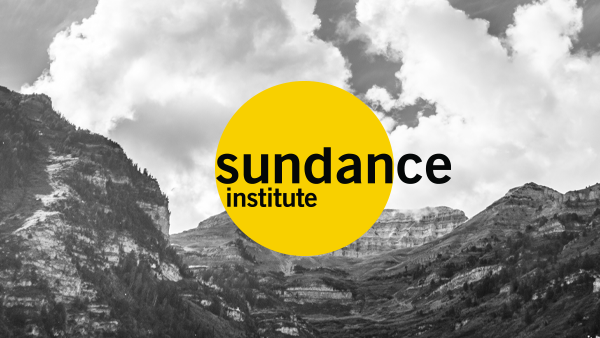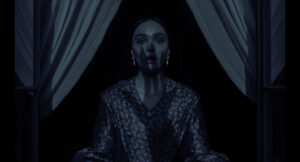Liza Johnson
Liza Johnson attended the 2008 Screenwriters and Directors Labs with Return, her first narrative feature film. With principal photography wrapping in upstate New York last November, she has just completed the 10th week of editing on Return. The film features Linda Cardellini as a soldier coming home from a tour of duty, and also stars Michael Shannon and John Slattery. We asked Liza to share some thoughts about post-production, and its relationship to working on set. Below are Liza’s reflections.
PART I
An actor with an underrated sense of humor called me a few weeks after we wrapped Return to say that he had just been working on the film of a well-known auteur. “His set was exactly like yours,” he said, “only his was chaotic on purpose.”
By which he meant that, in a circumstance where money was freely available, the director had still gone out of his way to make things crazy, hard to repeat, random, and full of chance variation—all elements that I had organic access to because on my set money and time were so scarce.
The edit room is the opposite of chaos, and I can see exactly where we created beautiful accidents—surprising moments, ephemeral flickers on faces, unexpected timing that sets off a chain reaction from actor to actor. Of course, a lot of the credit for those moments is due to the talent and experience of the actors, but also a lot of it is coming from using the limitations of our budget and the pressures of our schedule as a generative force.
And now there is a quiet opportunity to order the effects of the chaos.
Part II
Another actor told me that she can’t go see herself in most movies because she can only feel the memory of a minor fight she lost somewhere in the process—a wardrobe struggle, a performance decision she didn’t quite accept. Even after the elapsed time of post-production, and after waiting for the film to be released, she feels this defeat freshly, as if a time-release pill has sent out a new little bead of defeat and it’s hitting her bloodstream. When the movie comes out, everyone else finds her work wonderful, but she can mostly only remember the one small defeat.
Happily, this is structurally different for directors. On set there are so many simultaneous decisions to make that they have to be made reflexively, responding to the circumstances on the day and to the ideas and contributions of the cast and crew, then directing their decisions towards a common goal. It’s an exhilarating kind of focus, a pleasing blur of intensity, a pulsation of small choices and people’s reactions to those choices in the moment.
It’s almost hard to remember any single one of them as a battle that is won or lost. Looking at the material in editing, though, makes time for the kind of memory and reconsideration that the actor describes—there is the possibility to replay and relive any choice, celebrating small victories or feeling tiny pangs of defeat, depending on my mood, over and over again.
I try not to do this. It’s not useful. I’m doing better work for the movie when I act like a cold, hard killer of darlings than when I’m celebrating what an awesome decision I made several months ago. But certainly it’s an available option, to recall and relive a zillion versions of every pulsing contingency that once swirled around each moment of the footage. Even in the most wonderful moments in the footage, I now have the opportunity to ask, what if this or that had been otherwise, what if I had decided in favor of this instead of that.
Editing takes a long time, and thank god it is traditional to do it with a person who was not there for the bombardments of on-set decision-making and thus is liberated from rethinking those decisions. Unlike the actor, who sees her performance flitting by at the full speed of narrative time, my own time with the footage is long enough that I have by now already felt almost every pulsing variation of what-if-this and what-if-that.
Ten weeks in, I have seen the material forward and backward, assembled and reassembled. My mind has had time to play through most of the pulsing contingencies of the on-set chaos, and I can (mostly) treat my material without these attachments.
PART III
A friend recently said that she hoped that my new film was exactly like my other films.
Of course, it is and it isn’t. She knows the fiction films I’ve made in nonfiction environments. These are the films that helped me become comfortable with chaos. The “set” of these films—also known as reality—is unyielding and uncontrollable, and as such it’s a great place to get comfortable with being responsive to circumstance and coincidence. And it helped me develop an appreciation for how interesting it is when an accident enters the frame.
In these films that she likes, I rely on accident. What ends up in the frame is both my improvised rearrangement of the people and places that are available, and the things that the location offers that I can’t control. Moyra Davey has written rather brilliantly on the relationship between accident and photography. Contemporary art loves a constructed world, but Moyra stands up for the ways that accidental contributions from the world are one of the things that makes a photograph have life in it.
The traditional assumption of a fiction film, though, is a systematically controlled environment. On Return, if I wrote a scene that called for a run-down set, our art department would clean the location and then replace the naturally-occurring grime with our own systematically styled dirt and dust. Everything looks exactly as I imagined and scripted it, because they are great at their jobs. But visible accidents are few and far between.
I was discussing this with one of my advisors from the Screenwriters Lab, Susannah Grant, who kindly screened an early cut. She located a thematic through-line from my previous works, and showed me a way that my consistent thematic concerns are operating in a new register. The core elements of the story are the inner lives of purposefully created fictional characters, so Susannah also helped me look to the performance level to see where the most interesting, beautiful accidents are taking place.
There are some wonderful random intrusions into in the frame, of course, despite our best efforts. For example, at one point a character is at a dramatic moment of confusion, and a volunteer butterfly comes out of nowhere, fluttering around his head like cartoon stars. But Susannah helped me see that in this character drama, the core accidents, the ones I can depend on to make the picture come alive, are in the performances, in the unexpected relays and reflexes that I filmed pulsing across faces, in this controlled chaos. Now, in the edit room, that’s what I’m looking for.




